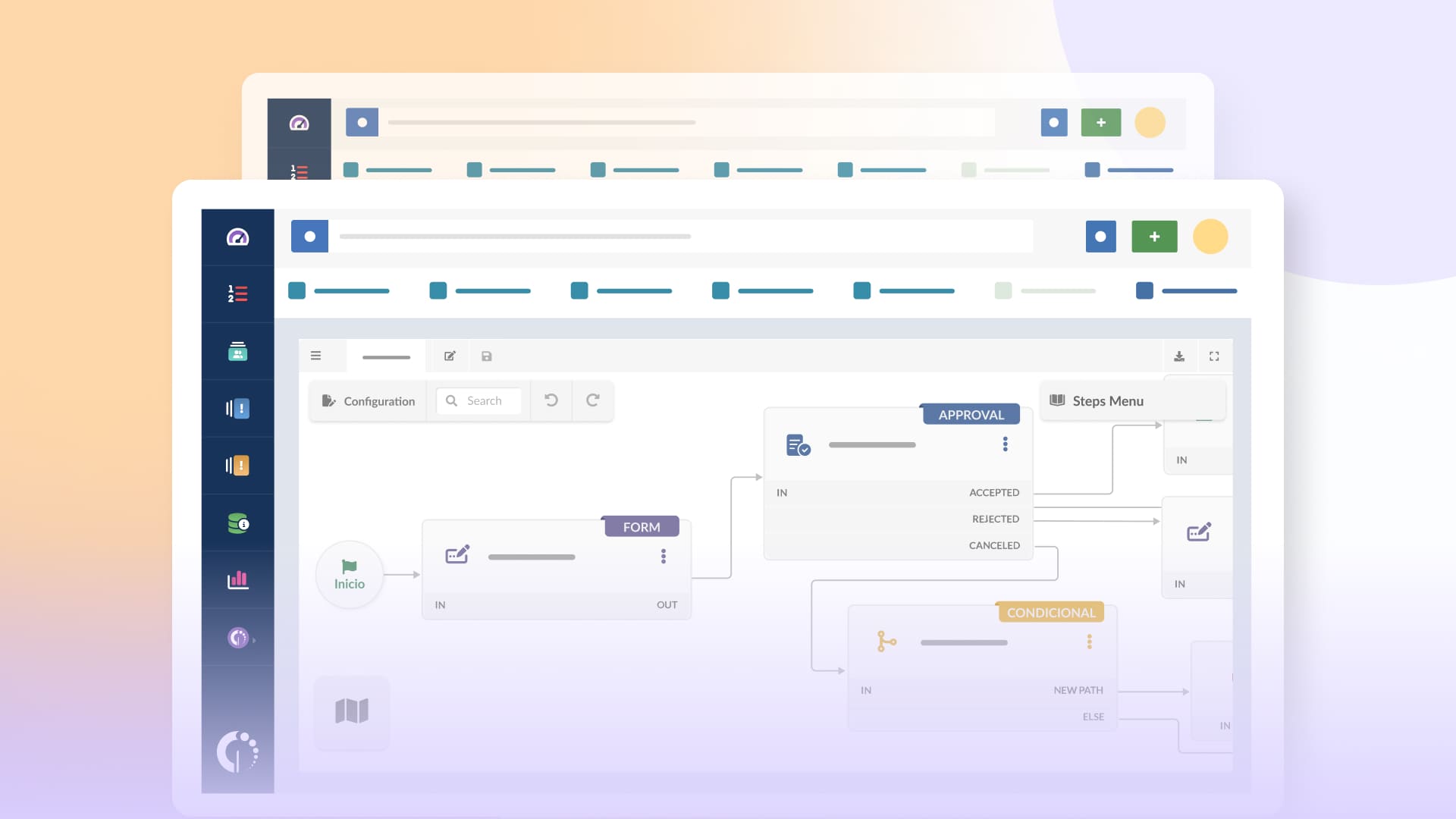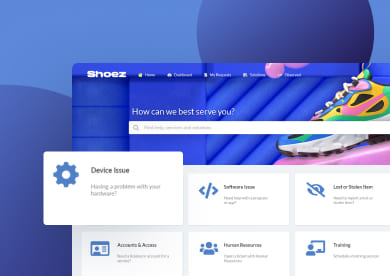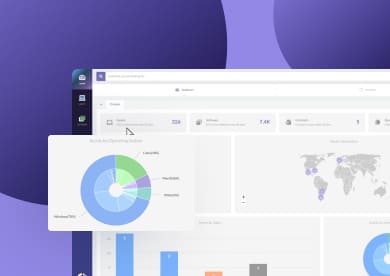An employee experience platform is designed to support people across the organization, not just through HR processes, but by improving how they access services, tools, and support. These platforms bring together capabilities like internal communication, knowledge management, surveys, and self-service portals to help employees stay productive and engaged.
In this article, we’ll go over six employee experience platforms with different areas of focus — from support and service delivery to feedback and internal communication.
What is an employee experience platform?
An employee experience platform is software designed to improve how people interact with their company throughout their time there, from onboarding to day-to-day communication and support. These platforms aim to make work more responsive, supportive, and easier to manage.
The term covers a wide range of tools. Some focus heavily on HR processes, others lean into engagement or feedback. Many organizations combine more than one.
Here are common focuses these platforms might take:
- Employee support: Platforms that help employees request IT or HR help, track issues, and access self-service options.
- Communication and connection: Tools that enable internal updates, social interaction, and team visibility.
- Recognition and rewards: Platforms that make it easy to acknowledge peers, offer incentives, and boost morale.
- Feedback and engagement: Systems that gather employee sentiment through surveys, pulse checks, or performance reviews.
- Culture and community: Software that supports internal values, encourages participation, or builds a sense of belonging.
- Analytics and reporting: Platforms that collect data on engagement, satisfaction, and operational processes.
- Learning and growth: Tools that manage internal training, skills tracking, or performance development.
5 best employee experience platforms
| Platform | Best for | Focus area |
| InvGate Service Management | Organizations needing centralized service delivery with self-service, automation, and Knowledge Management. | Enterprise Service Management (IT, HR, facilities) |
| Workday |
Large companies looking for a unified HCM and financial system with extensive HR functionality. | Human capital management, analytics. |
| BambooHR | Small to mid-sized businesses managing core HR tasks like hiring, onboarding, and performance. | Core HR and people management. |
| Vantage Circle | Companies aiming to increase recognition, rewards, and well-being programs. | Employee engagement and incentives. |
| Qualtrics EmployeeXM | Enterprises focused on measuring and improving the employee experience using data. | Employee sentiment and feedback analytics. |
InvGate Service Management
InvGate Service Management is an ITSM platform that can support HR operations. Employees get one place to request help, access knowledge articles, and track updates. That means fewer scattered emails and faster resolutions.
InvGate includes HR workflow automation for tasks like approvals and ticket routing. It also integrates with Microsoft Teams, so employees can get help from a virtual agent without leaving their usual tools.
HR managers and system admins will also appreciate that the platform is easy to configure without coding. You can adjust forms, workflows, and permissions to match your processes without relying on developers.
InvGate Service Management features
- Self-service portal for HR and IT support.
- Workflow automation for routing and approvals.
- Knowledge Management to document and share internal resources.
- Virtual agent integration via Microsoft Teams.
InvGate Service Management pricing details
Pricing is based on the number of agents. End users (employees submitting requests) are unlimited and free.
Plans:
- Starter: $17/agent/month ($999 billed annually)
- Pro: $40/agent/month (billed annually)
- Enterprise: Custom pricing
InvGate Service Management user reviews and ratings
Users often highlight the platform’s usability, customer support, and flexibility.
"We like the platform and how easy it was to implement and continue to use. It is one of the better Service Management softwares on the market. Ticketing is easy, making any changes is easy, and getting help from support is a breeze with InvGate."
User review from Gartner, Help Desk Admin
Workday
Workday is a cloud-based platform focused on human capital management (HCM) and finance. It’s widely used by enterprises for managing payroll, HR, and workforce planning. As an employee experience platform, it brings structure to internal processes and supports employees throughout their lifecycle.
Workday features
- Employee self-service for benefits, payroll, and more
- People analytics and reporting
- Continuous performance management
- Learning and development tools
Workday pros and cons
Pros:
- Scalable for large organizations
- Deep reporting capabilities
Cons:
- Complex implementation
- Higher learning curve
Workday pricing details
Costs depend on the number of users, the features/modules selected, and the company size. Pricing is highly customized; you must contact Workday for an exact quote.
Workday user reviews and ratings
It’s often praised for its flexibility and breadth of features, though users sometimes mention that the interface feels unintuitive.
"HR tool that is interactive, modernized and ahead of the game. It is very user-friendly and easy to do all things HR related in one centralized area. It allows you to select employee benefits with ease, following the guidelines and options provided in the employee benefits booklet. It also allows you to perform onboarding and recruiting tasks in one place."
User review from Gartner
BambooHR
BambooHR is a popular HR software for small to midsize businesses. It focuses on core HR tasks and simplifies hiring, onboarding, and employee records. It also supports feedback and performance tracking, contributing to the employee experience.
BambooHR features
- Centralized employee database
- Onboarding checklists and documents
- Performance reviews and goal tracking
- Employee satisfaction surveys
BambooHR pros and cons
Pros:
- Easy to use
- Designed for small and mid-size teams
Cons:
- Limited customization options
- Not as robust for complex org structures
BambooHR pricing details
BambooHR is priced per employee, per month, and offers three pricing tiers: Core, Pro, and Elite. The company doesn't disclose the price of its plans; you’ll need to contact them for exact pricing.
BambooHR user reviews and ratings
Users appreciate its user-friendly design and how it simplifies HR tasks. Some wish for more integrations and flexibility.
"BambooHR is user-friendly for employees, supervisors, and admin users. It has become our main source for employee information and time tracking, performance management, and surveys. Though we have not used the add-ons for payroll or benefits, those are also available."
Vantage Circle
Vantage Circle is an employee engagement platform focused on recognition, rewards, wellness, and surveys. It supports a culture of appreciation and encourages healthy habits.
Vantage Circle features
- Peer-to-peer recognition programs
- Reward points and gift cards
- Wellness challenges and gamification
- Employee feedback and surveys
Vantage Circle pros and cons
Pros:
- Broad engagement features
- Integrates with Microsoft Teams and Slack
- Limited support for operational HR tasks
Vantage Circle pricing details
Custom pricing based on selected modules and company size. Free trial available.
Vantage Circle user reviews and ratings
Users like the simplicity of the platform and how it boosts engagement.
"Vantage Circle is an effective platform for driving employee engagement through rewards and recognition. The app is intuitive, integrates well with our employee recognition system, and offers a wide catalog of redemption options across top brands."
Qualtrics EmployeeXM
Qualtrics EmployeeXM is an employee experience management software that focuses on collecting feedback and generating insights. It’s used to measure engagement, improve processes, and guide decision-making based on employee sentiment.
Qualtrics EmployeeXM features
- Employee engagement and pulse surveys
- Lifecycle feedback (onboarding, exit, etc.)
- Advanced analytics and benchmarking
- Action planning tools
Qualtrics EmployeeXM pros and cons
Pros:
- Sophisticated data analysis
- Useful for large organizations
Cons:
- Steep learning curve
- Pricing can be high
Qualtrics EmployeeXM pricing details
Qualtrics pricing is based on employee count. You must request a quote.
Qualtrics EmployeeXM user reviews and ratings
The platform is well-regarded for its analytics and dashboard capabilities. Some users find the initial setup complex.
"All I can say is it is great for gathering data and analyzing it further to get an effective feedback. The access to real-time insights into the sentiment analysis which is really helpful to make data-driven decisions. Moreover, I like the easy-to-use interface make it accessible for the teams to monitor and implement properly. To conclude this, it enhance employee engagement in my opinion."

How to choose an employee experience platform
Choosing the right employee experience platform depends on your organization’s priorities, internal workflows, and existing tools. Here are some key areas to consider before making a decision:
-
What processes are you trying to support?
Some platforms focus on HR operations (like onboarding and performance reviews), while others are built around service delivery (like IT or facilities support). Others emphasize communication, recognition, or pulse surveys. Clarify what you want to improve first. -
Will employees actually use it?
A platform’s value depends on adoption. Look for tools that are easy to access (e.g., through Microsoft Teams or Slack), have clear interfaces, and allow employees to help themselves without friction. -
Can non-technical teams configure it?
No-code or low-code options allow HR or other business units to make changes without developer support. This matters if you expect to update forms, workflows, or knowledge articles frequently. -
What kind of reporting do you need?
Some platforms include robust analytics for tracking usage, satisfaction, or service delivery. If you're using the platform to justify improvements to the employee experience, look for reporting that’s easy to understand and share. -
Integration with existing tools
If your organization uses Microsoft 365, Google Workspace, or collaboration tools like Teams and Slack, check whether the platform integrates with them—especially if you want employees to avoid context-switching. -
Budget and scalability
Consider whether the platform fits your current budget but also if it can scale with your organization. Some platforms charge per user or per module, which can get expensive over time.
Final thoughts
When an employee experience platform is built around actual work processes — like requesting support, finding answers, or managing internal services — it becomes a more meaningful part of daily operations. That’s where value shows up: in fewer blockers, less frustration, and faster results.
In practice, that often means combining a few purpose-built tools that complement each other instead of relying on one vendor to cover everything. The goal isn’t to check off features — it’s to reduce friction in how employees interact with the organization.
Want to improve internal service delivery as part of your employee experience strategy? Check out what InvGate Service Management can offer.
















